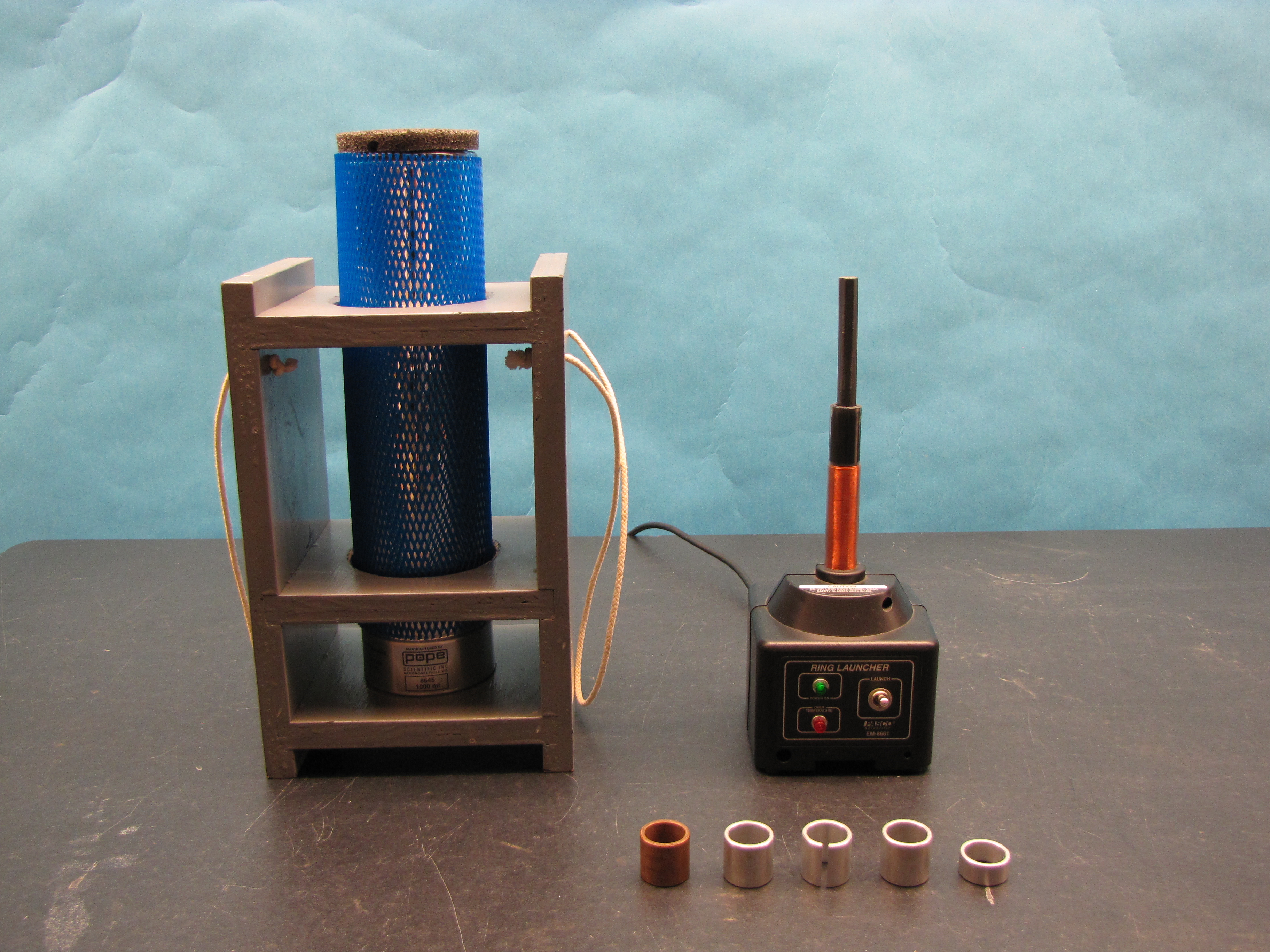Demos: 6D-11 Jumping Ring

An aluminum ring is placed loosely around the extended core of an solenoidal electromagnet. When the DC is switched on, the ring jumps up. Induced current in the ring, caused by the growing magnetic field when the switch is activated, is responsible for the repulsive force between the coil and the ring. If a split ring is placed over the electromagnet, the coil will not jump because of the broken “circuit” in the ring, preventing the current flow. Also available for a humorous sidelight is an aluminum beer can (the Silver Bullet) which can be shot into the air. If the ring is cooled in liquid nitrogen, the induced current will be greater, causing the ring to jump higher.
Directions: Place the complete ring over the solenoid and close the switch. Try to catch the ring on the way down. Place the split ring over the solenoid and close the switch. Nothing happens. Then place the beer can over the solenoid and close the switch. Again, catch it on the way down.
Suggestions for Presentation: Students really enjoy this one, and you can add to the drama with a little hamming. Introduce it as a modern projectile launcher, or whatever. After launching the beer can (with some appropriate patter), return to the ring, but without making a deal of it, place the split ring on the apparatus. After several failed attempts to launch it, try the other ring again (which will launch). Then ask if there any differences in the two rings. If they can’t tell, place both on the overhead projector where the split in the one ring will be evident. Ask what role the split plays.
Applications: This demo is particularly suited to students taking calculus-based physics where a discussion of the force on a magnetic dipole in a non-uniform magnetic field has already taken place. It should be pointed out to the audience that the ring sits just outside (and on axis) of the solenoid. One can then ask the audience the following questions:
- When the solenoid is activated, in what direction is
 ? (Assume that current flows such that the magnetic field points towards the ceiling.)
? (Assume that current flows such that the magnetic field points towards the ceiling.) - In what direction does the induced current flow around the ring?
- Because the ring jumps vertically, there must be a force on the ring in the vertical direction. Using,
 what component of the magnetic field is responsible for the observed behavior? At this point, it might be useful to draw or otherwise show the pattern in space of the magnetic field vectors.
what component of the magnetic field is responsible for the observed behavior? At this point, it might be useful to draw or otherwise show the pattern in space of the magnetic field vectors. - Relate this demo to
 .
.
Last Updated: Nov 30, 2023 11:25 AM